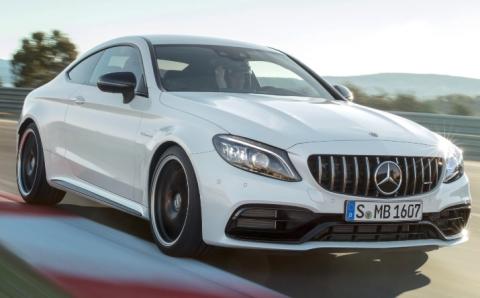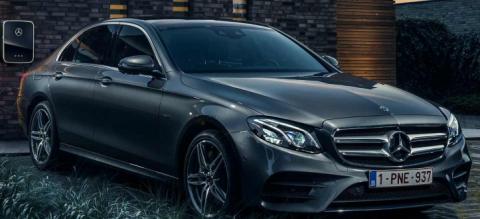Mercedes-Benz eSprinter Production in Dusseldorf, Germany. Please Consider Subscribing.
The Stuttgart-based manufacturer has been building its globally successful vans in Dusseldorf since 1962. Ever since, the plant has continually developed to become in recent years the leading Sprinter plant worldwide and to serve as a benchmark for the other locations. The implementation of future-oriented technologies and production methods as well as their consistent testing benefits the entire production network of Mercedes-Benz Vans.
More than 4.6 million vehicles have been produced in Dusseldorf to date. Since 2018, production of the new Sprinter has also taken place there, with over 200,000 units having already left the assembly line, ready to enter into their daily service all over the world. The production of the fully electric eSprinter marks the beginning of a new era in Dusseldorf. Building the eSprinter in Dusseldorf is a next step for the future of the plant and for the manufacturer itself. Over the past years, already in advance of production of the new Sprinter and the new drive system variants, Mercedes-Benz Vans has invested a total of around 330 million euros in the technical expansion of production, while taking into account the fact that, in future, the manufacture of both conventionally operated and fully electric vehicles will be built on a single production line. The result will be enormous flexibility and the ability to meet both customer and market requirements. Besides the comprehensive investments in the production systems, the plant has also been massively investing in the basic and advanced training of its own employees. Since the decision was made to build the eSprinter in Dusseldorf, the plant has become the competence centre for electric drives and has developed the requisite expertise. To date over 2,400 employees have been trained for handling and assembling the high-voltage technologies.
Mercedes-Benz Vans banks on sustainability not only in the products that it consistently electrifies and further optimises, but in particular in its own production as well. The goal is to make all van production CO2-neutral by 2022. To this end various measures have been initiated as part of the so-called green production strategy: energy purchasing at the Dusseldorf plant has also been consistently switching to green energy, and from 2022 electric power is to be procured from 100 percent renewable sources only. The CO2 balance sheet of transportation within the plant is also being addressed: at present, new mobility systems, such as on-demand plant shuttles, are being implemented in Dusseldorf. In addition, since 2012 the Dusseldorf plant has already been a paperless factory and is increasingly relying on automatically guided fuel-cell vehicles. All these measures supplement one another and promote the speedy realisation of the ambitious objectives set by the plant itself, to make a lasting contribution to climate protection.
The Mercedes-Benz eSprinter is intended to cover the broadest possible range of use in urban mobility. Accordingly, it is initially being offered as a panel van with high roof and a permissible gross weight of 3,500 kilogrammes. Its maximum loading volume is 10.5 m3, the same as for the Sprinter with combustion engine. Similar to the entry-level diesel engine, the electric drive in the eSprinter drives the front wheels with an output of 85 kW and a torque figure of up to 300 Newton metres.
A flexible payload and battery concept moreover allow adaptation to individual needs for practical use as the customer can choose between three or four battery units. Equipped with a battery capacity of 55 kWh, its range is an estimated 168 kilometres , with a maximum payload of 891 kilogrammes. A second battery option takes into account other priorities in the use parameters: three instead of four battery units with a capacity of 35 kWh allow a range of around 115 kilometres 1, 2. In return, the maximum payload increases by around 140 to approximately 1040 kilogrammes. The integrated fast-charging function provides for more flexibility; 80 percent of the battery charge can be replenished within 30 minutes. The maximum speed can be configured to suit the task at hand: the top speed can be set at 80 km/h, 100 km/h or even as high as 120 km/h, if speed is essential.
0:00 Body Shop
4:03 Pain Shop
6:04 Final eSprinter Assembly
The Stuttgart-based manufacturer has been building its globally successful vans in Dusseldorf since 1962. Ever since, the plant has continually developed to become in recent years the leading Sprinter plant worldwide and to serve as a benchmark for the other locations. The implementation of future-oriented technologies and production methods as well as their consistent testing benefits the entire production network of Mercedes-Benz Vans.
More than 4.6 million vehicles have been produced in Dusseldorf to date. Since 2018, production of the new Sprinter has also taken place there, with over 200,000 units having already left the assembly line, ready to enter into their daily service all over the world. The production of the fully electric eSprinter marks the beginning of a new era in Dusseldorf. Building the eSprinter in Dusseldorf is a next step for the future of the plant and for the manufacturer itself. Over the past years, already in advance of production of the new Sprinter and the new drive system variants, Mercedes-Benz Vans has invested a total of around 330 million euros in the technical expansion of production, while taking into account the fact that, in future, the manufacture of both conventionally operated and fully electric vehicles will be built on a single production line. The result will be enormous flexibility and the ability to meet both customer and market requirements. Besides the comprehensive investments in the production systems, the plant has also been massively investing in the basic and advanced training of its own employees. Since the decision was made to build the eSprinter in Dusseldorf, the plant has become the competence centre for electric drives and has developed the requisite expertise. To date over 2,400 employees have been trained for handling and assembling the high-voltage technologies.
Mercedes-Benz Vans banks on sustainability not only in the products that it consistently electrifies and further optimises, but in particular in its own production as well. The goal is to make all van production CO2-neutral by 2022. To this end various measures have been initiated as part of the so-called green production strategy: energy purchasing at the Dusseldorf plant has also been consistently switching to green energy, and from 2022 electric power is to be procured from 100 percent renewable sources only. The CO2 balance sheet of transportation within the plant is also being addressed: at present, new mobility systems, such as on-demand plant shuttles, are being implemented in Dusseldorf. In addition, since 2012 the Dusseldorf plant has already been a paperless factory and is increasingly relying on automatically guided fuel-cell vehicles. All these measures supplement one another and promote the speedy realisation of the ambitious objectives set by the plant itself, to make a lasting contribution to climate protection.
The Mercedes-Benz eSprinter is intended to cover the broadest possible range of use in urban mobility. Accordingly, it is initially being offered as a panel van with high roof and a permissible gross weight of 3,500 kilogrammes. Its maximum loading volume is 10.5 m3, the same as for the Sprinter with combustion engine. Similar to the entry-level diesel engine, the electric drive in the eSprinter drives the front wheels with an output of 85 kW and a torque figure of up to 300 Newton metres.
A flexible payload and battery concept moreover allow adaptation to individual needs for practical use as the customer can choose between three or four battery units. Equipped with a battery capacity of 55 kWh, its range is an estimated 168 kilometres , with a maximum payload of 891 kilogrammes. A second battery option takes into account other priorities in the use parameters: three instead of four battery units with a capacity of 35 kWh allow a range of around 115 kilometres 1, 2. In return, the maximum payload increases by around 140 to approximately 1040 kilogrammes. The integrated fast-charging function provides for more flexibility; 80 percent of the battery charge can be replenished within 30 minutes. The maximum speed can be configured to suit the task at hand: the top speed can be set at 80 km/h, 100 km/h or even as high as 120 km/h, if speed is essential.
0:00 Body Shop
4:03 Pain Shop
6:04 Final eSprinter Assembly
- Category
- For All








Comments